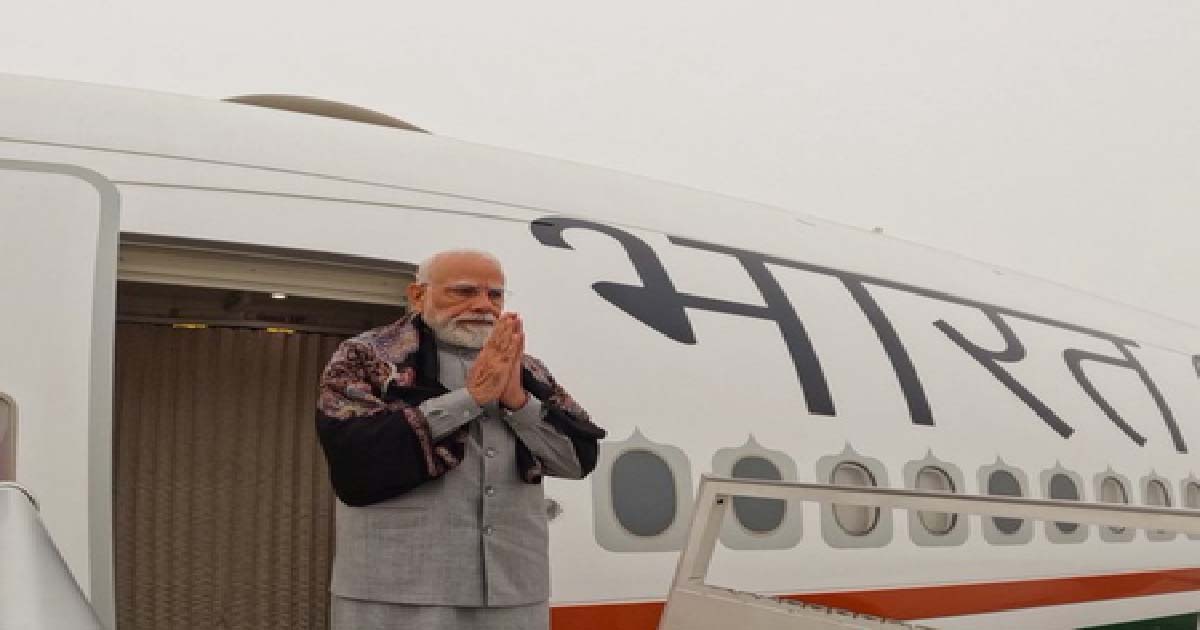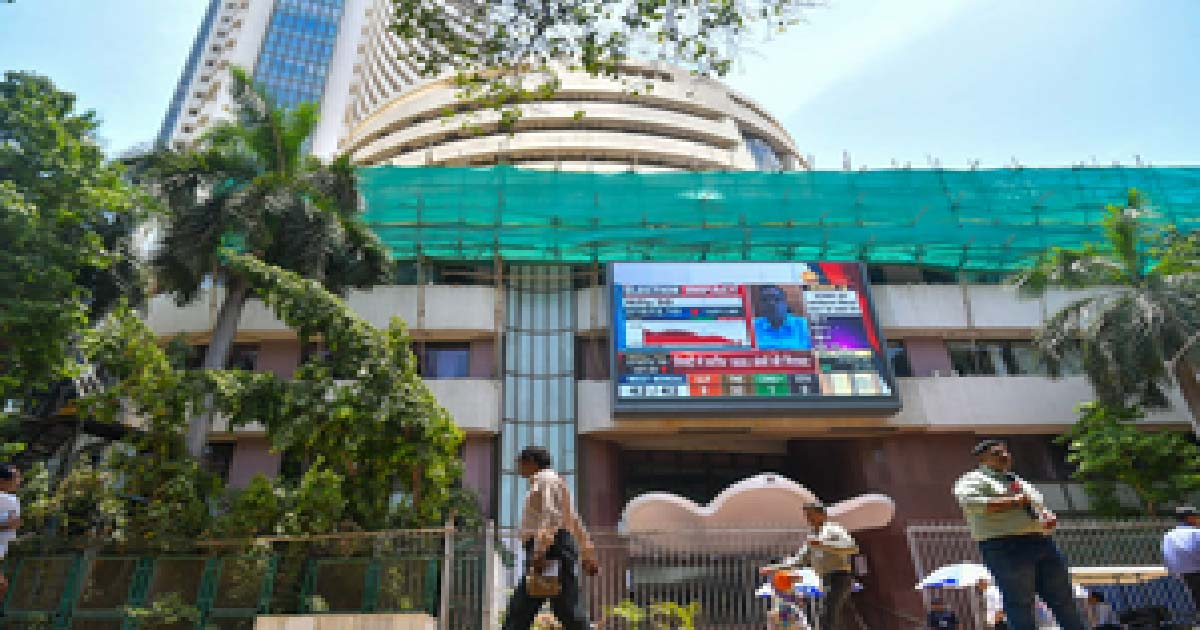Business
Changing Dynamics: Smaller fund houses outpace major players in 2021

The mutual fund space has grown over the pandemic and interestingly so far in 2021, several smaller companies have gained momentum and outpaced the growth of established major players.
In tandem with the rise in the equity market, small players made giant strides during the year.
Equity schemes of fund houses like Quant Mutual Fund, ITI Mutual Fund, PPFAS Mutual have been among the best performing schemes so far in the year.
The assets under management of Quant witnessed over five-fold rise during January-July 2021. Its AUM in December 2020 stood at Rs 521 crore and by July-end it reached Rs 2,842 crore, showed data from primemfdatabase.com.
The AUM of ITI Mutual Fund rose over 100 per cent to Rs 1,879 crore and PPFAS Mutual Fund’s AUM also nearly doubled to Rs 14,318 crore.
Some of the schemes of relatively new fund houses have given blockbuster returns with several of them coming from Quant Mutual Fund. As per the market estimates, ICICI Prudential Technology Fund, Quant Tax Plan Fund, PGIM India Midcap Opportunities Fund, Quant Infrastructure Fund and Quant Active Fund are the top five equity funds giving best returns ranging from 80 per cent to over 100 per cent.
Kotak Mahindra Mutual Fund, a major player in the segment, has the highest AUM of over Rs 2.58 lakh crore as of July 2021, 13 per cent higher than Rs 22.78 lakh crore, the Prime Database data showed.
According to Pranav Haldea, Managing Director of Prime Database Group, the higher growth rate of AUM of smaller fund houses is due to low base effect along with their identification of specialised offerings.
“One reason is low base effect, and second I think smaller fund houses have done a commendable job in terms of identifying niches where they have specialised,” he told IANS.
He further said that performance of these mutual funds along with the incumbent giants will continue to be robust.
“The sort of AUM growth which you have seen in the mutual fund industry in the five odd years, the AUM now stands at close to 35-36 lakh crores. So the growth of these smaller fund houses will also extract a fair share of that growth,” he said.
Haldea told IANS that the growth will continue because there will be more channellising of retail savings into mutual funds going forward.
More and more retail investors in the last one and half years have come to the capital market as various other kinds of investment markets are not providing the investment returns that they are used to.
“So retail investors are increasingly looking at equity and the markets obviously are supportive and the markets are doing really well,” he said.
N.S. Venkatesh, Chief Executive, Association of Mutual Funds in India (AMFI) said: “Mutual Funds have emerged as the preferred savings-cum-investment avenue over the last few years, and the pandemic has actually triggered this shift towards Mutual Funds in a more pronounced way.”
This shift will continue in 2021 and beyond, accentuated by Sebi-driven initiatives towards transparency and disclosures, he said.
“Over the years, mutual fund industry too, has deepened its penetration, beyond top 15 cities, even as number of MF players has risen with new fund houses coming in to mutual fund industry, enabling steady but sure rise in the number of investors who have been embracing mutual funds as the preferred savings tool,” Venkatesh said.
The number of mutual fund investors in the country has doubled to 2.39 crore as of June 30, 2021 from 1.19 crore at the end of March 2017, thereby indicating that pandemic has actually had no impact on the inflows, he added.
The mutual fund industry AUM rose 4.9 per cent in July 2021 to a record Rs 35.3 lakh crore due to inflows into both equity funds and debt funds
An ICICI Direct Research report said that IT funds have been consistent outperformers in the last two to three years as the growth outlook improved for the sector in the post Covid world resulting in valuation re-rating of most stocks.
The sectors or segments like infrastructure, PSUs that lagged behind in the early part of the rally, have started to gain traction indicating the healthy trend of sector rotation, it said.
“Small cap funds have been consistent outperformers in the last one year after they were beaten down during the Covid pandemic induced market fall. Midcaps also followed small cap funds and have outperformed other categories. However, there seemed to be some profit booking recently as it underperformed in the last one month,” it said.
Business
Centre releases over Rs 260 crore for rural local bodies in Kerala

New Delhi, Dec 15: The government on Monday said it has released Rs 260.20 crore to rural local bodies in Kerala as part of the 15th Finance Commission grants for the financial year 2025-26.
The amount represents the first instalment of untied grants and covers all 14 district panchayats, 152 block panchayats and 9,414 gram panchayats (GPs) in the state, according to an official statement.
Untied grants are meant to be utilised by rural local bodies/PRIs for location-specific felt needs under the 29 subjects listed in the Eleventh Schedule of the Constitution, except for salaries and other establishment expenditures.
Tied Grants, on the other hand, are earmarked for basic services relating to sanitation and maintenance of ODF (open defecation-free) status, including management and treatment of household waste, human excreta and faecal sludge, and supply of drinking water, rainwater harvesting, and water recycling.
Last week, the government released Rs 717.17 crore to strengthen rural local bodies in Maharashtra as part of the first instalment of untied grants for the financial year 2025-26. The funds were released to duly elected and eligible rural local bodies in the state, covering two district panchayats (Zilla Parishads), 15 block panchayats (panchayat samitis), and 26,544 gram panchayats.
The government, through the Ministry of Panchayati Raj and the Ministry of Jal Shakti (Department of Drinking Water and Sanitation), recommends release of 15th Finance Commission grants to states for Panchayati Raj Institutions, which are then released by the Ministry of Finance.
The allocated grants are recommended and released in two instalments in a financial year.
Earlier in November this year, the Centre released over Rs 223 crore for rural local bodies in Assam and another Rs 444.38 crore to strengthen panchayat bodies in Odisha as part of the 15th Finance Commission grants.
Business
PM Modi’s 3-nation visit to further bolster trade and investment ties

New Delhi, Dec 15: As Prime Minister Narendra Modi embarked on a three-nation visit to Jordan, Ethiopia and Oman on Monday, bolstering economic and trade ties is among the key agenda items of his visit.
PM Modi’s visit is expected to open far-reaching opportunities to enhance the country’s economic footprint across West Asia and Africa.
Last week, the Union Cabinet, chaired by the Prime Minister, approved the proposed Free Trade Agreement (FTA) between India and Oman, aimed at deepening trade and investment relations between the two countries.
The approval also came after Oman’s Shura Council approved the Gulf nation’s proposed FTA with India. The talks for the trade agreement, officially termed the Comprehensive Economic Partnership Agreement (CEPA), formally began in November 2023.
India and Oman share a long-standing and multidimensional Strategic Partnership supported by strong trade ties, energy cooperation and cultural linkages. The economic and commercial relations between India and Oman are robust and buoyant.
The bilateral trade between the two nations reached $8.947 billion during FY 2023-2024, and for FY 2024-25, it stood at $10.613 billion, according to an official statement. Bilateral investment flows have also been strong, as reflected in numerous joint ventures established both in India and Oman.
Moreover, there are over 6,000 India-Oman joint ventures present in Oman, estimated to be adding $7.5 billion to Oman’s economy in the form of total capital investment over a long period.
PM Modi will hold high-level talks with the Sultan of Oman in Muscat and discuss strengthening the Strategic Partnership as well as the strong commercial and economic relationship between the two nations.
Notably, India is Jordan’s third-largest partner, with bilateral trade at around $2.8 billion. Jordan is a key supplier of fertilisers to India, particularly phosphates and potash.
Although the size of India-Ethiopia bilateral trade was around $550 million in FY25, India was the second largest trading partner for the African nation. India’s key exports include primary and semi-finished iron and steel products, drugs and pharmaceuticals, fertilisers and machinery, among others.
Business
Indian stock market ends in bullish tone over hopes of renewed FII inflows

Mumbai, Dec 13: Indian equity benchmarks made marginal losses during the week amid sustained FII outflows and uncertainty surrounding the US-India trade negotiations.
However, the market ended the week in a bullish tone with Nifty surging 0.57 per cent on the last trading day after the US Federal Reserve announced a 25-bps rate cut.
Benchmark indices Nifty and Sensex dipped 0.36 and 0.17 per cent during the week to close at 26,046 and 85,267, respectively.
Indian equities opened the week on a subdued note, amid continued rupee depreciation and negative global cues due to rising Japanese bond yields.
The US Fed rate cut later in the week eased liquidity concerns and fuelled hopes of renewed FII inflows. With supportive central bank policies, steady domestic investments, and optimism over trade progress despite unclear timelines, benchmarks closed the week on a strong note.
India’s year-on-year inflation rate based on the Consumer Price Index (CPI) was estimated at 0.71 per cent for November this year which was marginally higher than the 0.25 per cent in October, according to figures released by the Ministry of Statistics.
Broader indices underperformed, with the Nifty Midcap100 and Smallcap100 down 0.51 per cent and 0.67 per cent, respectively, in a week.
Sectoral performance was mixed, with IT under pressure while PSU banks, real estate and consumer durables witnessed selective buying.
Hrishikesh Yedve, AVP Technical and Derivative Research, Asit C. Mehta Investment Interrmediates, said that Nifty’s weekly chart shows buying interest at lower levels.
Nifty has 26,200 and 26,325 as stiff resistance levels while 25,700 will act as support zone, he added.
Analysts said that markets will likely remain positive in near future but sensitive to rupee stability, FII flow trends, trade agreement clarity, and cues from major central banks abroad.
Amidst risks from currency fluctuations and global trade uncertainties, improving earnings visibility and liquidity support provide a constructive backdrop and downside protection, they added.
-

 Crime3 years ago
Crime3 years agoClass 10 student jumps to death in Jaipur
-

 Maharashtra1 year ago
Maharashtra1 year agoMumbai Local Train Update: Central Railway’s New Timetable Comes Into Effect; Check Full List Of Revised Timings & Stations
-

 Maharashtra1 year ago
Maharashtra1 year agoMumbai To Go Toll-Free Tonight! Maharashtra Govt Announces Complete Toll Waiver For Light Motor Vehicles At All 5 Entry Points Of City
-

 Maharashtra1 year ago
Maharashtra1 year agoFalse photo of Imtiaz Jaleel’s rally, exposing the fooling conspiracy
-

 National News1 year ago
National News1 year agoMinistry of Railways rolls out Special Drive 4.0 with focus on digitisation, cleanliness, inclusiveness and grievance redressal
-

 Maharashtra1 year ago
Maharashtra1 year agoMaharashtra Elections 2024: Mumbai Metro & BEST Services Extended Till Midnight On Voting Day
-

 National News1 year ago
National News1 year agoJ&K: 4 Jawans Killed, 28 Injured After Bus Carrying BSF Personnel For Poll Duty Falls Into Gorge In Budgam; Terrifying Visuals Surface
-

 Crime1 year ago
Crime1 year agoBaba Siddique Murder: Mumbai Police Unable To Get Lawrence Bishnoi Custody Due To Home Ministry Order, Says Report












